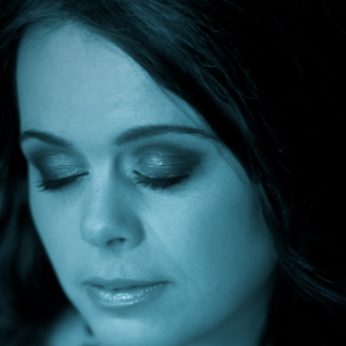Composer: Luigi Boccherini (b. 1743 - d. 1805)
Performance date: 05/07/2012
Venue: St. Brendan’s Church
Composition Year: 1781
Duration: 00:30:15
Recording Engineer: Anton Timoney, RTÉ lyric fm
Instrumentation Category:Large Mixed Ensemble
Instrumentation Other: S-solo, 2vn, va, 2vc
Artists:
Maria Keohane -
[soprano]
Arte dei Suonatori (Aureliusz Golinski, Ewa Golinska [violins], Anna Nowak [viola], Tomasz Pokrzywinski [cello]) -
[quartet]
Kate Hearne -
[recorder/cello]

Numerous composers,
from Giovanni Battista Pergolesi to Arvo Pärt have been fascinated by the Seven Sorrows of the Virgin Mary; a poem
formerly believed to have been composed by Jacopone da Todi (d 1306). More recently scholars date the
text from the eighteenth century and suggest another Franciscan, yet to be
identified, may have penned it. The text, outside the Mass or Requiem and
indeed non-biblical, has been the inspiration for some remarkable music.
Two essentially
Christian texts that resonate with The
Lamentations of Jeremiah, a particularly Jewish text, are those concerning
the remorse at the death of Christ: the Stabat
Mater and the Seven Last Words from
the Cross. The latter, set around 1786 by Joseph Haydn [1732-1809] shares
some DNA and resonance with the Stabat
Mater by Luigi Boccherini, and even a notably similar use of the harmonic F
minor scale that bookends the Boccherini work.
One can only conjecture whether Haydn knew the earlier Stabat Mater before he composed his Seven Last Words, a work also destined
for Spain, commissioned by Cadiz cathedral. We know
that Haydn and Boccherini expressed their mutual respect via their Viennese
publisher Artaria, though sadly there is no evidence that the two geniuses ever
met. Haydn even admitted to not being able to find Boccherini’s place of
temporary exile, Arenas de San Pedro, on a map.
Boccherini made
two versions of the Stabat Mater and
it is the first version of 1781, only discovered in the 1980s, that we are to
hear. Scored for soprano and cello quintet it was written while the composer was in exile
with his patron Prince Don Luís de Borbón in a beautiful but isolated and
mountainous region about 150 kilometres west of Madrid. It was arguably framed
subconsciously with two women in mind: Boccherini’s mother who died in 1776 and
his first wife the soprano Clementina Peliccha. Clementina we assume would have
joined forces for the premiere with the musicians available at this remote
royal court-in-exile. They included the Font family string quartet with whom
Luigi played the first of the two cello parts that shines significantly in the Eja Mater section of the work.
Tragically, Clementina died four years later and it must have remained an
extremely poignant work in the composer’s mind when in 1801 he rearranged the
work for three singers and orchestra. A ‘da capo aria’ operatic style is
prevalent at times in the work yet it doesn’t change the tone of a musical
Passion, even at the last Paradisi
Gloriam, which offers hope without triumphal expectations.
Stabat
mater dolorosa: The key of F minor sets the tone in which the work
begins and ends. Boccherini’s natural melancholy suits the flavour of the text
and even when diverting to the relative major key of A flat he still manages to
portray a pervading atmosphere of pain and sorrow.
Cujus
animam:
A shift of tempo and urgency, operatic in feel, takes up the drama of the text
and one is almost reminded by the soprano of Donna Anna in Mozart’s Don Giovanni in her state of
wretchedness.
Quae
morebat et dolebat: The poignantly anguished vocal line
and lyrical weeping is underscored by pulsating bow vibrato effects,
idiosyncratic of Boccherini.
Quis
est homo?:
This operatic recitative sets up the soprano for a religious transcendence, and
the pity of La Pieta is for this brief moment exposed.
Pro
peccatis suae gentis: The return of the optimistic key of A
flat major is again given an upbeat tempo for a woman whose suffering
transcends pain and becomes her salvation.
Eja,
mater fons amoris: The central moment when the Son
(played by the first cello) addresses his mother for the last time. This is
autobiographical in the sense that Boccherini would have been thinking of his
own dead mother and addressing her through the first cello opening and closing
soliloquies. This is quintessential Boccherini in its charm and pervasive
melancholy, combined with love and expressive humanity.
Tui
nati vulnerati: A vigorous operatic contrast from the pain, toils
and concerns of this life to thoughts of the after life, the music lifts us to
euphoria and only for a brief moment the mother’s grief is shared in order to
help us grieve. The soprano is given her highest note (B flat), a signal of
ultimate release.
Virgo
virginum praeclara: A woman shares her pain and loss with
another woman and offers succour to the one who has always been the helper.
Sublime harmonies creep in to help us receive the divine message of a shared
humanity.
Fac
ut portem Christi mortem: the power of moral support is eternal
and the memory of the lost son is rejoiced.
Fac
me plagis vulnerari: a more confessional and Salvationist
cry of help prepares us for the final moment.
Quando
corpus morietur: the moment of ultimate decay approaches and is
portrayed by a chromatic descending line and the return of the f minor scales almost stifling in its heaviness, but
before we expect it the soul is released, and without any signalling, gone.
Copyright © 2025 West Cork Music. All rights reserved.
Designed and developed by Matrix Internet